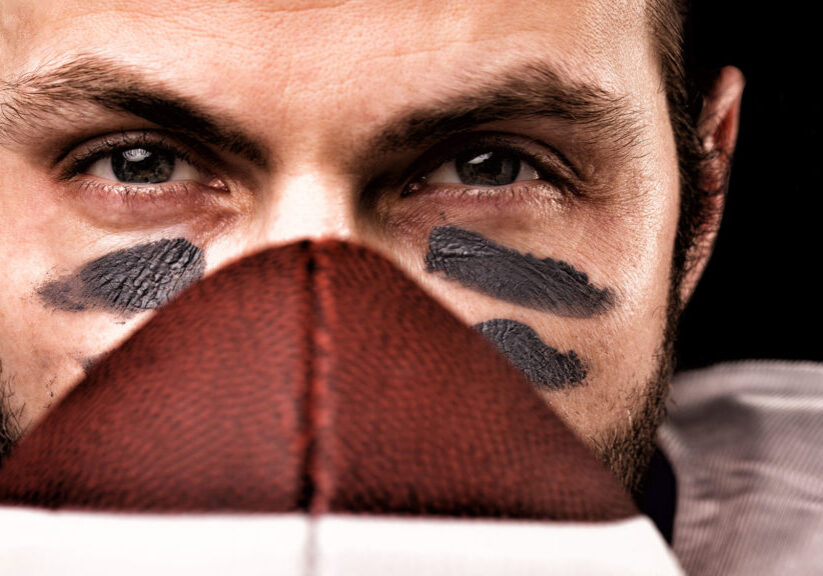Since the beginning of collegiate athletics, the effort to maintain amateur status for athletes was paramount. As athletic departments became more and more successful in fundraising, and the requirements to stay competitive drove coaching salaries higher and higher, it was clear the athletes themselves were not directly affected financially, and athletic scholarships did not keep up that same pace. Many collegiate athletes receive no scholarship money, others receive a specified percentage of their educational costs and only the coveted few receive “full rides.” Even still, none of them were allowed to receive compensation from outside sources in the form of sponsorship. The idea that monetizing their athleticism would encroach their amateur status was a key rule of the NCAA.
At some point, it became clear that the individuals doing the most work — the athletes — were not being adequately compensated in comparison to the amount of money being earned within the collegiate sports industry itself. According to Statista,1 universities collectively generate billions of dollars from TV deals, sponsorships and ticket sales — to the tune of almost $19 billion by NCAA athletic departments in 2019 alone! The amateur rules never allowed student athletes to receive any direct compensation in the way of cash or products.
The U.S. Supreme Court’s unanimous ruling against the NCAA in summer 2021 found that the NCAA’s rules on education-based compensation were unfair and violated federal anti-trust law. So, the NCAA changed its long-time rule, allowing college athletes to sign deals that use their name, image and/or likeness (NIL). A flurry of activity occurred, and many athletes found ways to engage in the newly created NIL opportunity.
Some of the deals2 are quite clever, like:
- Ga’Quincy “Kool-Aid” McKinstry got a deal with Kool-Aid
- Trey Knox, along with his Husky dog, Blue, signed a deal with Petsmart
- Twin volleyball players at Fresno State, Haley and Hanna Cavendar, signed deals with Boost Mobile and Six Star Pro Nutrition
- High schooler Mikey Williams signed with PUMA despite not being eligible to play in the NBA until the 2024 draft3
Not everyone has been able to take advantage of this opportunity. Opendorse, a sports technology company that serves as the connection between athletes and endorsement deals, has compiled some interesting information on NIL in its first year. It seems 60% of the deals were with college football players, followed by women’s volleyball at 10%. Further, it reports 48% of NIL compensation is for posting social media content, 19% is for licensing rights and 13% is for players’ product signatures.4
Meanwhile, booster club5 collectives (groups of people) and directives (individuals) have popped up at various universities to bankroll their teams through lucrative NIL cash payments designed to keep their current players, recruit high school players or entice athletes to transfer. NCAA guidelines are quite vague and difficult to enforce, and some states are further protected by state laws that allow such behavior. Whether considered cheating or basic capitalism, it’s happening across the country. There’s talk that the elite Power 5 programs have set baseline compensation for each current football player or prospect. The CEO of Opendorse, Blake Lawrence, believes that more than $500 million could be raised in player NIL funds among the 65 Power 5 collectives.
Alarm bells are beginning to chime. The basic concern is that the rich schools just get richer, leaving others even further behind. Coach Nick Saban of Alabama University, a perennial football powerhouse, had this to say: “We need some kind of national legislation to control that. There will be an imbalance as to who dominates college football if it isn’t regulated.”6
Now some athletic departments are demanding the NCAA level the NIL playing field. At the very least, they’re asking that deals struck with athletes who have not yet signed on with that school be sanctioned. This week at the NCAA Division I Board of Directors7 meeting, existing bylaws were clarified that prohibit boosters from being involved in recruiting. They also promised to investigate deals that have already occurred and enforce this rule going forward. The cry for clear rules, enforced equally, will presumably get the current chaos under control.8
Yet plenty of opportunity remains for athletes and sponsors who want to work together. Be sure to take time to understand the rules, investigate any opportunity that presents itself and get professional advice and counsel early. Also make sure to work directly with your athletic department, as is required, and make a long-term plan for any proceeds that come to you.
Creative Planning Sports and Entertainment believes a solid financial education is the best place to start in an NIL deal. For help with NIL deals, or any other financial matter, schedule a call with a member of our team.
Footnotes:
- https://www.statista.com/chart/25236/ncaa-athletic-department-revenue/
- https://ftw.usatoday.com/lists/nil-college-basketball-football-best-weirdest-deals
- https://afrotech.com/nil-deals?item=14
- https://www.insidehighered.com/news/2021/10/12/while-some-ncaa-athletes-cash-nil-others-lose-out
- https://www.si.com/college/2022/05/02/nil-name-image-likeness-experts-divided-over-boosters-laws-recruiting
- https://brobible.com/gear/article/factor-meals-review/
- https://www.si.com/college/2022/05/09/ncaa-nil-guidelines-boosters-athlete-funds
- https://www.sandiegouniontribune.com/sports/story/2022-05-04/blame-ncaa-for-nil-getting-out-of-hand


